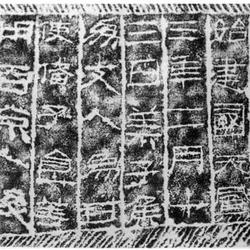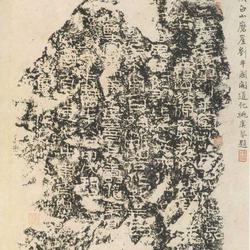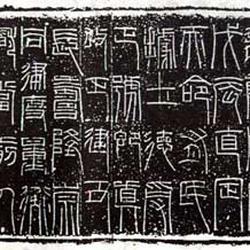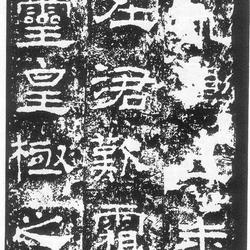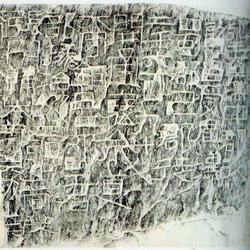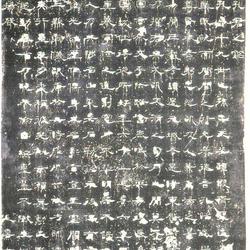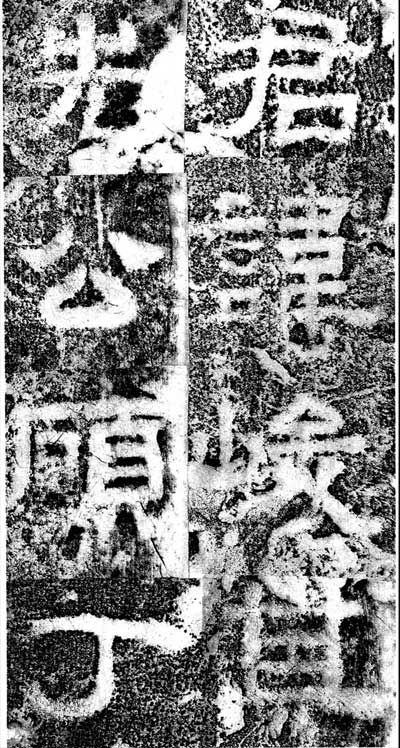
The full name of this stele is "Stele of Lu Jun, Lieutenant of the Han Sili School", also known as "Stele of Lu Jun, the Lieutenant of the Han Sili School" and "Stele of Lu Zhonghui". It was established in April of the third year of Xiping (173) in the Eastern Han Dynasty. 17 lines, 32 words per line. In Jining City, Shandong Province.
Lu Jun, whose courtesy name was Zhongyan, was a native of Changyi, Shanyang (so his rule was located forty miles northwest of Jinxiang County, Shandong Province). From the official level, he was promoted to Sili Xiaowei and Tunqi Xiaowei. He died in his residence in the first year of Xiping at the age of sixty-two. In April of the following year, 320 disciples, former officials, including Yu Shang and Ma Yin, set up monuments in his honor. The monument was originally located at Lu Jun's tomb in the south of Jiao's Mountain in Jinxiang. According to "Shui Jing Zhu·Jishui" quoted from Dai Yanzhi's "Western Expedition", there is a stone temple in front of the tomb, "the four walls are all covered with bluestones. Since the deed was written, there were seven loyal ministers, filial sons, chaste wives, Confucius and his disciples." The images of twelve people are carved in stone around the image, and the words are clear..." This is a stone carving artwork of the same type as the Han portrait stone at Wuliang Temple in Jiaxiang, Shandong. The stele in front of the tomb was later moved to the Confucius Temple in Rencheng (now Jining).
This stele is quite cluttered and many characters are no longer legible. His calligraphy is vigorous, thick and plump, with a mixture of leisurely style and ancient elegance. The characters range from big to small, and the layout is lively and cute. The characters for "Bei Yang" and "Bei Yin" are different from those of the same name, while "Bei Yin" is simple and natural, with a lot of natural interest. Guo Zongchang of the Ming Dynasty said in his "History of Epigraphy and Stone" that "his calligraphy is sharp and elegant, the first in the Wei Dynasty, but it is naturally Han style." Wan Jing of the Qing Dynasty said: "The fonts are square and even, with Le, Zeng, Chao and Tiao brushes. The starting point is extremely plump and fat, and other Kaiyuan families seem to imitate their body." Yang Shoujing's "Ping Bei Ji" says: "Plump and majestic, Emperor Minghuang of the Tang Dynasty and Xu Jihai also came from this place, but the fatness is too thick, and there is no such charm." The above families are quite similar. The insightful comments illustrate the influence of "Lu Jun Stele" on the calligraphy style of later generations.
Song Zhengqiao's "Jin Shi Lue" contains superb calligraphy on this stele, so it is presumed that it was written by Cai Yong. There is actually no basis for this theory. Doubts have been raised since Zhao Mingcheng's "Jin Shi Lu", and many later calligraphers and scholars relied on Zhao's theory.

